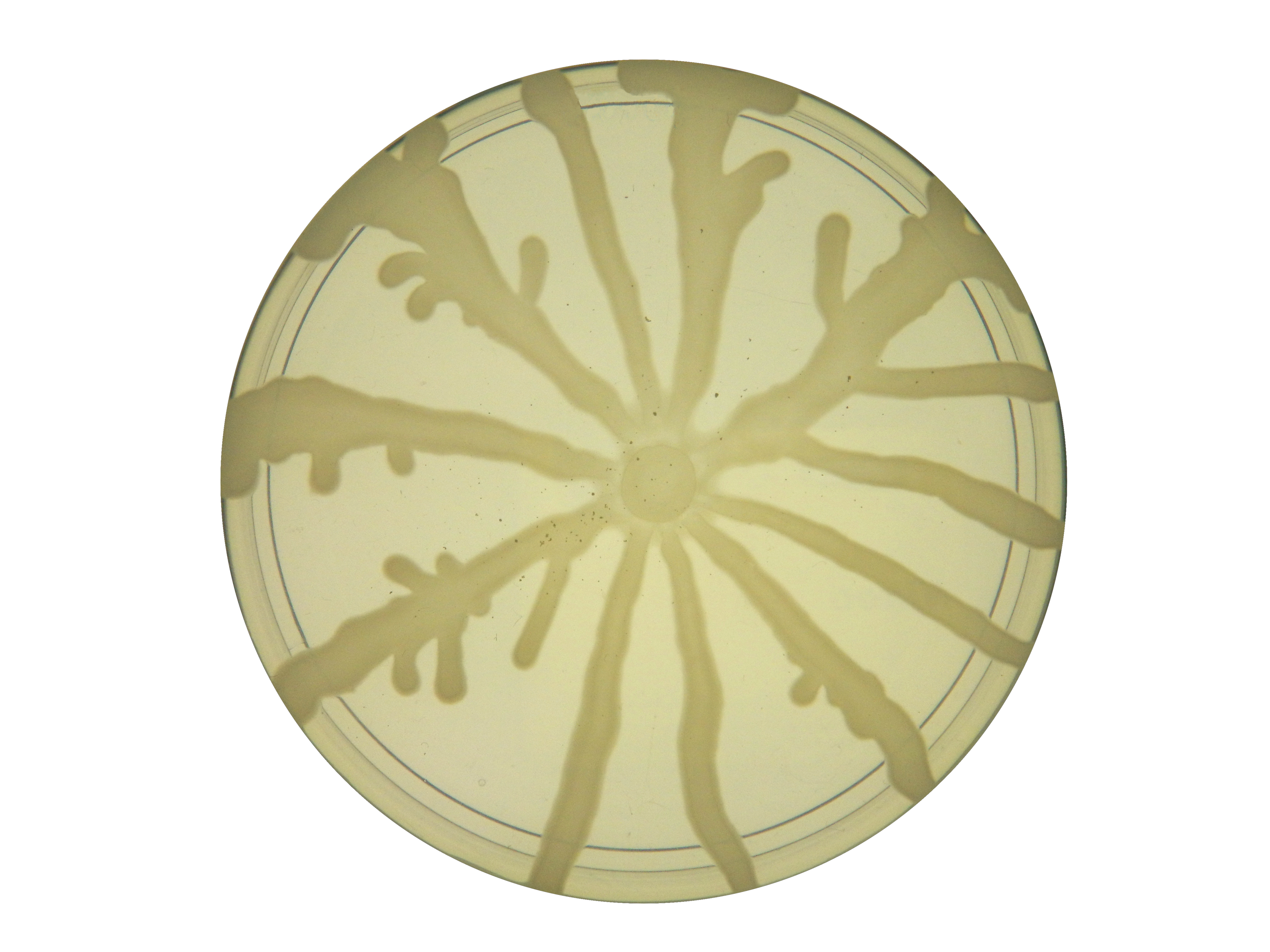Swarming motility on:
[Wikipedia]
[Google]
[Amazon]

 Swarming motility is a rapid (2–10 μm/s) and coordinated translocation of a bacterial population across solid or semi-solid surfaces, and is an example of bacterial multicellularity and swarm behaviour. Swarming motility was first reported by Jorgen Henrichsen and has been mostly studied in genus ''
Swarming motility is a rapid (2–10 μm/s) and coordinated translocation of a bacterial population across solid or semi-solid surfaces, and is an example of bacterial multicellularity and swarm behaviour. Swarming motility was first reported by Jorgen Henrichsen and has been mostly studied in genus ''

Serratia
''Serratia'' is a genus of Gram-negative, facultatively anaerobic, rod-shaped bacteria of the family Yersiniaceae. According to the List of Prokaryotic names with Standing Nomenclature (LPSN), there are currently 19 species of ''Serratia'' that a ...
'', '' Salmonella'', '' Aeromonas'', ''Bacillus
''Bacillus'' (Latin "stick") is a genus of Gram-positive, rod-shaped bacteria, a member of the phylum '' Bacillota'', with 266 named species. The term is also used to describe the shape (rod) of other so-shaped bacteria; and the plural ''Bacill ...
'', ''Yersinia
''Yersinia'' is a genus of bacteria in the family Yersiniaceae. ''Yersinia'' species are Gram-negative, coccobacilli bacteria, a few micrometers long and fractions of a micrometer in diameter, and are facultative anaerobes. Some members of ''Yer ...
'', ''Pseudomonas
''Pseudomonas'' is a genus of Gram-negative, Gammaproteobacteria, belonging to the family Pseudomonadaceae and containing 191 described species. The members of the genus demonstrate a great deal of metabolic diversity and consequently are able t ...
'', ''Proteus
In Greek mythology, Proteus (; Ancient Greek: Πρωτεύς, ''Prōteus'') is an early prophetic sea-god or god of rivers and oceanic bodies of water, one of several deities whom Homer calls the "Old Man of the Sea" ''(hálios gérôn)''. ...
'', ''Vibrio
''Vibrio'' is a genus of Gram-negative bacteria, possessing a curved-rod (comma) shape, several species of which can cause foodborne infection, usually associated with eating undercooked seafood. Being highly salt tolerant and unable to survive ...
'' and ''Escherichia
''Escherichia'' () is a genus of Gram-negative, non- spore-forming, facultatively anaerobic, rod-shaped bacteria from the family Enterobacteriaceae. In those species which are inhabitants of the gastrointestinal tracts of warm-blooded animals, ...
''.
This multicellular behavior has been mostly observed in controlled laboratory conditions and relies on two critical elements: 1) the nutrient composition and 2) viscosity of culture medium (i.e. % agar). One particular feature of this type of motility is the formation of dendritic fractal-like patterns formed by migrating swarms moving away from an initial location. Although the majority of species can produce tendrils when swarming, some species like ''Proteus mirabilis
''Proteus mirabilis'' is a Gram-negative, facultatively anaerobic, rod-shaped bacterium. It shows swarming motility and urease activity. ''P. mirabilis'' causes 90% of all ''Proteus'' infections in humans. It is widely distributed in soil and ...
'' do form concentric circles motif instead of dendritic patterns.
Biosurfactant, quorum sensing and swarming
In some species, swarming motility requires the self-production ofbiosurfactant Biosurfactant usually refers to surfactants of microbial origin. Most of the biosurfactants produced by microbes are synthesized extracellularly and many microbes are known to produce biosurfactants in large relative quantities. Some are of commerc ...
to occur. Biosurfactant synthesis is usually under the control of an intercellular communication system called quorum sensing
In biology, quorum sensing or quorum signalling (QS) is the ability to detect and respond to cell population density by gene regulation. As one example, QS enables bacteria to restrict the expression of specific genes to the high cell densities at ...
. Biosurfactant molecules are thought to act by lowering surface tension, thus permitting bacteria to move across a surface.
Cellular differentiation
Swarming bacteria undergo morphological differentiation that distinguish them from their planktonic state. Cells localized at migration front are typically hyperelongated, hyperflagellated and grouped in multicellular raft structures.Ecological significance
The fundamental role of swarming motility remains unknown. However, it has been observed that active swarming bacteria of ''Salmonella typhimurium
''Salmonella enterica'' subsp. ''enterica'' is a subspecies of ''Salmonella enterica'', the rod-shaped, flagellated, aerobic, Gram-negative bacterium. Many of the pathogenic serovars of the ''S. enterica'' species are in this subspecies, includin ...
'' shows an elevated resistance to certain antibiotics compared to undifferentiated cells.
See also
*Bacterial motility
Bacterial motility is the ability of bacteria to move independently using metabolic energy. Most motility mechanisms which evolved among bacteria also evolved in parallel among the archaea. Most rod-shaped bacteria can move using their own ...
References
{{collective animal behaviour Bacteriology